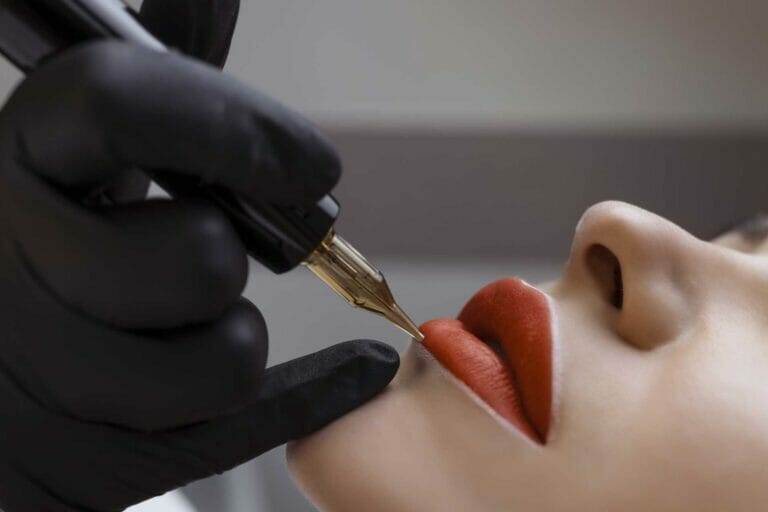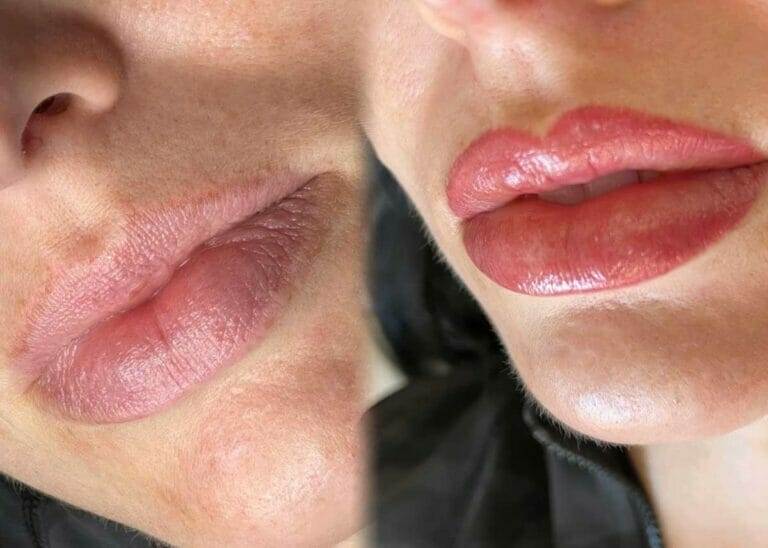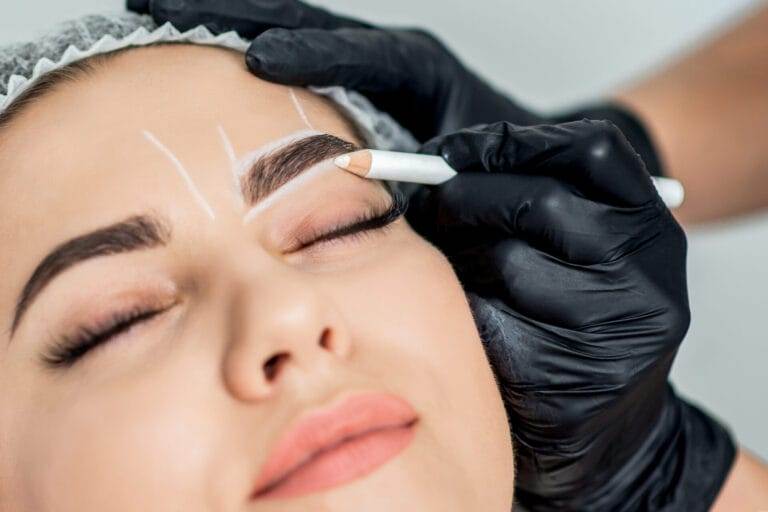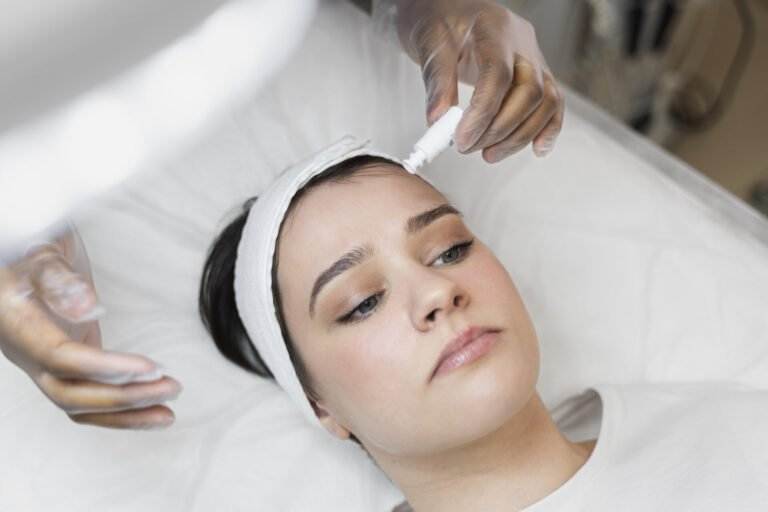Cosmetic tattooing, also known as permanent makeup or micropigmentation, is a procedure that involves the application of pigments to the skin to enhance and define certain features. It has gained popularity in recent years as a convenient and long-lasting solution for those who want to save time on their daily beauty routine. In this article, we will explore what cosmetic tattooing is, how it differs from traditional tattooing, its benefits, common areas for treatment, pain management options, longevity, risks and complications, choosing the right artist, the procedure itself, aftercare instructions, removal and correction options, and more.
What is cosmetic tattooing?
Cosmetic tattooing is a form of semi-permanent makeup that involves the use of a tattoo machine or manual tool to deposit pigments into the dermal layer of the skin. The procedure is similar to traditional tattooing but uses different techniques and equipment. The goal of cosmetic tattooing is to enhance and define natural features such as eyebrows, eyeliner, and lips. It can also be used to create the appearance of areolas for breast cancer survivors or to camouflage scars.
There are several types of cosmetic tattooing procedures available. Eyebrow tattooing is one of the most popular treatments and involves filling in sparse or thin eyebrows to create a fuller and more defined look. Eyeliner tattooing is another common procedure that enhances the eyes by adding color and definition to the lash line. Lip tattooing can be used to add color and shape to the lips, giving them a more youthful and vibrant appearance. Areola tattooing is often done after breast reconstruction surgery to create the illusion of a nipple and areola.
How is cosmetic tattooing different from traditional tattooing?
While both cosmetic tattooing and traditional tattooing involve the application of pigments into the skin, there are several key differences between the two procedures. In traditional tattooing, the goal is to create permanent designs or images on the skin, while cosmetic tattooing aims to enhance natural features in a more subtle and natural-looking way.
The techniques and equipment used in cosmetic tattooing are also different from traditional tattooing. Cosmetic tattooing typically uses a tattoo machine or manual tool with a fine needle to deposit pigments into the skin. The needle used in cosmetic tattooing is much smaller and shallower than those used in traditional tattooing, resulting in a more delicate and precise application.
The pigments and colors used in cosmetic tattooing are also different from those used in traditional tattooing. Cosmetic tattoo pigments are specially formulated to fade over time and mimic the natural colors of eyebrows, eyeliner, and lips. They are designed to gradually fade and blend with the surrounding skin, resulting in a more natural-looking result.
What are the benefits of cosmetic tattooing?
There are several benefits to undergoing cosmetic tattooing. One of the main advantages is that it saves time and money on daily beauty routines. With cosmetic tattooing, you no longer have to spend time applying and reapplying makeup every day. This can be especially beneficial for those with busy lifestyles or for those who have difficulty applying makeup due to vision problems or physical limitations.
Cosmetic tattooing also enhances natural features, giving you a more polished and put-together appearance. It can help define sparse or thin eyebrows, add color and shape to lips, and create the illusion of fuller lashes with eyeliner tattooing. By enhancing these features, cosmetic tattooing can help boost your self-confidence and make you feel more comfortable in your own skin.
What are the most common areas for cosmetic tattooing?
The most common areas for cosmetic tattooing include eyebrows, eyeliner, lips, and areolas. Eyebrow tattooing is popular among those who have sparse or thin eyebrows or who want to achieve a more defined and symmetrical shape. Eyeliner tattooing is often chosen by those who want to enhance their eyes and achieve a more awake and refreshed appearance. Lip tattooing can be used to add color and shape to the lips, giving them a more youthful and vibrant look. Areola tattooing is often done after breast reconstruction surgery to create the appearance of a nipple and areola.
Is cosmetic tattooing painful?
The level of pain experienced during a cosmetic tattooing procedure can vary depending on several factors, including personal pain tolerance and the area being treated. Some people may experience mild discomfort or a slight stinging sensation during the procedure, while others may find it more uncomfortable. However, most cosmetic tattoo artists use numbing creams or local anesthesia to minimize any pain or discomfort.
There are also pain management options available for those who are more sensitive to pain. These options may include the use of topical numbing creams, cooling techniques, or even oral pain medication. It is important to discuss your pain tolerance and any concerns you may have with your cosmetic tattoo artist before the procedure so that they can tailor the experience to your needs.
How long does cosmetic tattooing last?
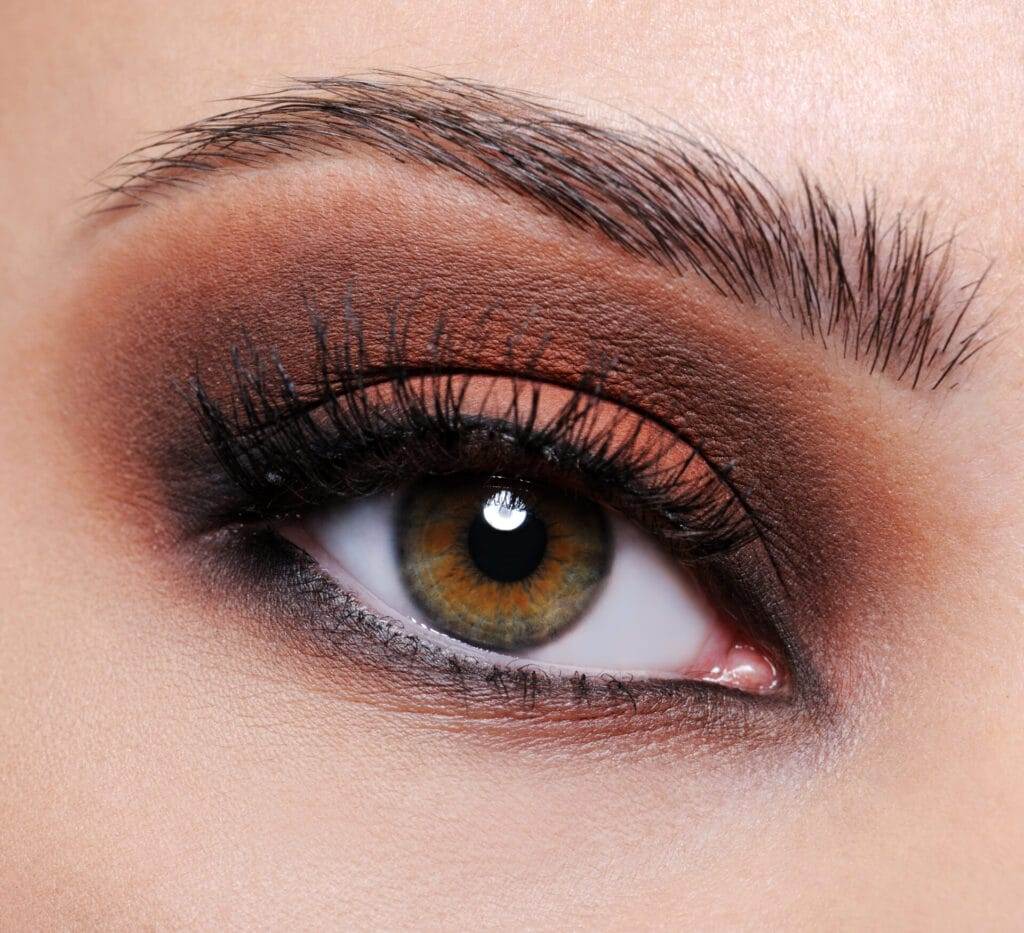
The longevity of cosmetic tattooing can vary depending on several factors, including the area being treated, the type of pigments used, and individual skin characteristics. On average, cosmetic tattoos can last anywhere from one to five years before they start to fade. However, touch-up procedures are often recommended every one to two years to maintain the desired color and shape.
Several factors can affect the longevity of cosmetic tattoos. These factors include sun exposure, skincare routine, and individual skin characteristics. Excessive sun exposure can cause the pigments to fade more quickly, so it is important to protect your cosmetic tattoos from direct sunlight by wearing sunscreen or protective clothing. Additionally, certain skincare products or treatments that contain exfoliating ingredients or chemicals can also cause the pigments to fade more quickly.
What are the risks and complications of cosmetic tattooing?
Like any cosmetic procedure, there are risks and potential complications associated with cosmetic tattooing. These risks include infection, allergic reactions, and scarring. It is important to choose a reputable and experienced cosmetic tattoo artist who follows strict hygiene and safety protocols to minimize the risk of infection. Allergic reactions to the pigments used in cosmetic tattooing are rare but can occur. It is important to discuss any known allergies or sensitivities with your cosmetic tattoo artist before the procedure.
Scarring is another potential complication of cosmetic tattooing, although it is rare. Scarring can occur if the skin is not properly prepared or if the healing process is not managed correctly. It is important to follow all aftercare instructions provided by your cosmetic tattoo artist to minimize the risk of scarring.
What should I expect during a cosmetic tattooing procedure?
Before undergoing a cosmetic tattooing procedure, you will typically have a consultation with your chosen artist. During this consultation, you will discuss your desired outcome, any concerns or questions you may have, and the artist will assess your skin and determine the best course of action. They may also perform a patch test to check for any allergic reactions to the pigments.
On the day of the procedure, the artist will clean and prepare the area to be treated. They will then apply a topical numbing cream or local anesthesia to minimize any pain or discomfort. Once the area is numb, the artist will begin the tattooing process using a tattoo machine or manual tool with a fine needle. The pigments will be deposited into the skin in small, precise strokes or dots to create the desired shape and color.
After the procedure is complete, the artist will provide you with aftercare instructions to ensure proper healing and minimize the risk of complications. These instructions may include avoiding sun exposure, applying a healing ointment, and avoiding certain skincare products or treatments.
How do I care for my cosmetic tattoo?
Proper care and maintenance of your cosmetic tattoo are essential to ensure its longevity and prevent complications. After the procedure, it is important to keep the treated area clean and moisturized. Your cosmetic tattoo artist will provide you with specific aftercare instructions, but generally, this involves gently cleansing the area with a mild cleanser and applying a healing ointment or moisturizer.
It is also important to avoid sun exposure and harsh chemicals on the treated area. Direct sunlight can cause the pigments to fade more quickly, so it is important to wear sunscreen or protective clothing when outdoors. Additionally, certain skincare products or treatments that contain exfoliating ingredients or chemicals can also cause the pigments to fade more quickly, so it is important to avoid these products on the treated area.
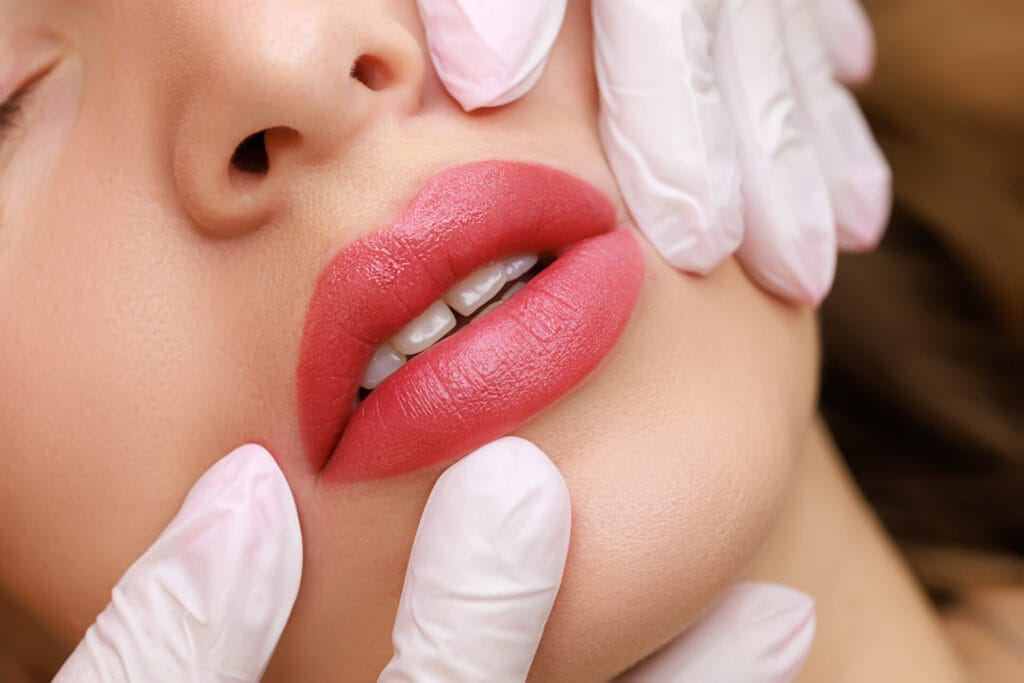
Can cosmetic tattoos be removed or corrected?
While cosmetic tattoos are designed to be long-lasting, there are options available for removal or correction if desired. Laser tattoo removal is one option for removing unwanted cosmetic tattoos. This procedure uses laser technology to break down the pigments in the skin, allowing the body to naturally eliminate them over time. Multiple sessions may be required to achieve the desired results.
If you are unhappy with the shape or color of your cosmetic tattoo, correction procedures can be done to adjust or modify the appearance. This may involve adding more pigment to darken or intensify the color, or removing some of the pigment to lighten or soften the appearance. It is important to consult with an experienced cosmetic tattoo artist who specializes in correction procedures to determine the best course of action.
Cosmetic tattooing is a convenient and long-lasting solution for those who want to enhance and define their natural features. It saves time and money on daily beauty routines, enhances natural features, and boosts self-confidence. The most common areas for cosmetic tattooing include eyebrows, eyeliner, lips, and areolas. While the procedure may cause some discomfort, there are pain management options available. The longevity of cosmetic tattoos can vary but touch-up procedures are often recommended every one to two years. There are risks and potential complications associated with cosmetic tattooing, but choosing a reputable and experienced artist can minimize these risks. Proper aftercare is important to ensure proper healing and longevity of the cosmetic tattoo. Removal and correction options are available if desired. Overall, cosmetic tattooing can be a great option for those looking for a convenient and long-lasting solution to enhance their natural features.





